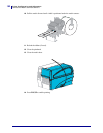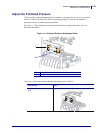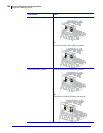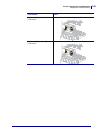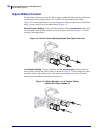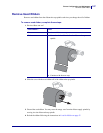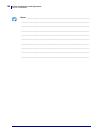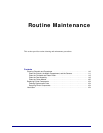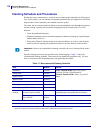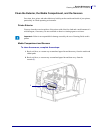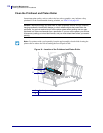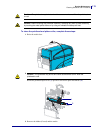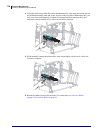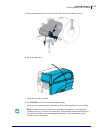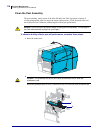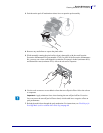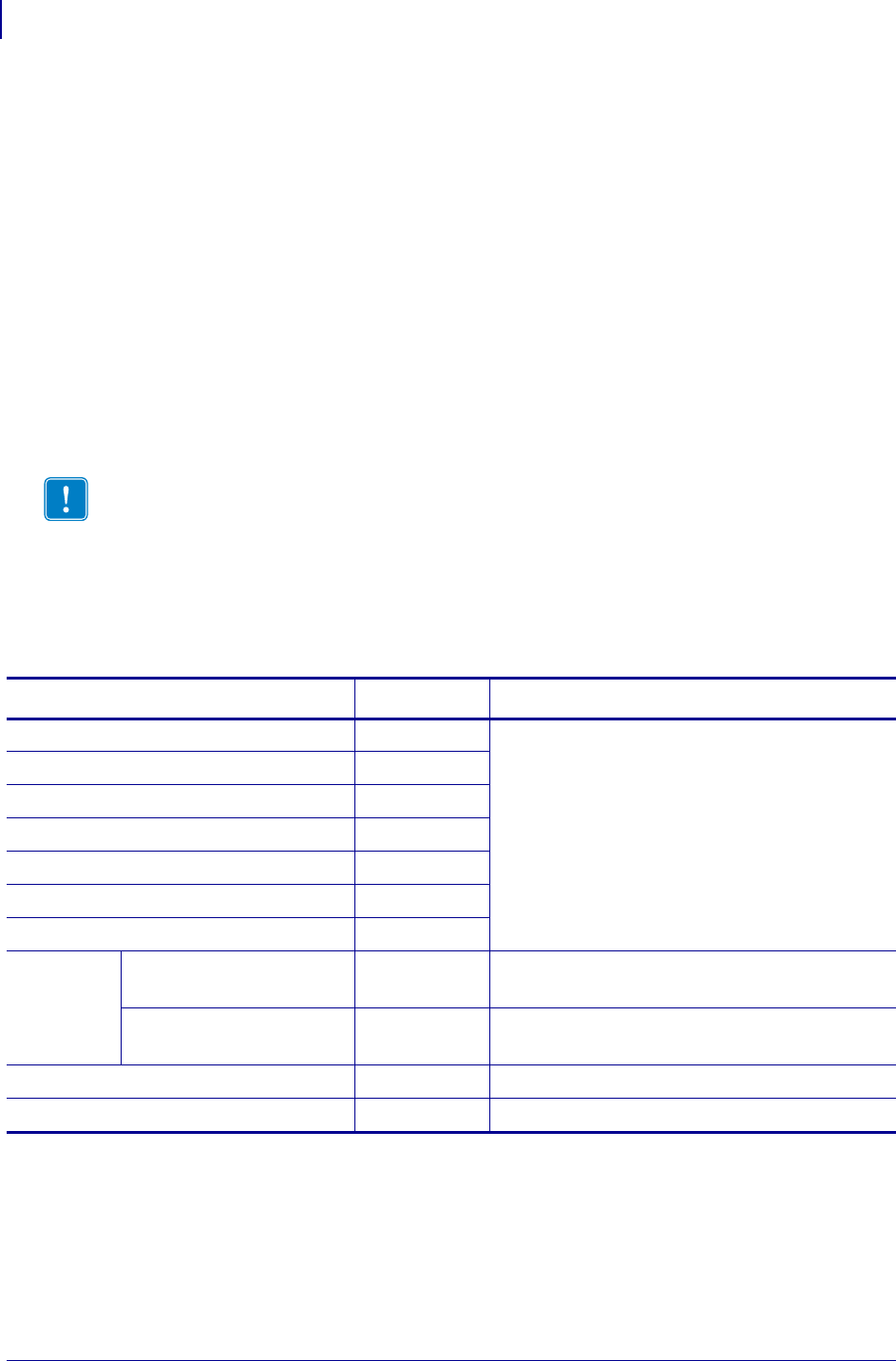
Routine Maintenance
Cleaning Schedule and Procedures
110
P1048261-004 8/22/12
Cleaning Schedule and Procedures
Routine preventive maintenance is a crucial part of normal printer operation. By taking good
care of your printer, you can minimize the potential problems that you might have with it and
help to achieve and to maintain your standards for print quality.
Over time, the movement of media or ribbon across the printhead wears through the protective
ceramic coating, exposing and eventually damaging the print elements (dots). To avoid
abrasion:
• Clean the printhead frequently.
• Minimize printhead pressure and burn temperature (darkness) settings by optimizing the
balance between the two.
• When using Thermal Transfer mode, ensure that the ribbon is as wide or wider than the
media to prevent exposing the printhead elements to the more abrasive label material.
Specific cleaning procedures are provided on the following pages. Table 13 shows the
recommended cleaning schedule. These intervals are intended as guidelines only. You may
have to clean more often, depending upon your application and media.
.
Important • Zebra is not responsible for damage caused by the use of cleaning fluids on this
printer.
Table 13 • Recommended Cleaning Schedule
Area Method Interval
Printhead Solvent* Direct Thermal Mode: After every roll of
media (or 500 feet of fanfold media).
Thermal Transfer Mode: After every roll of
ribbon.
Platen roller Solvent*
Media sensors Air blow
Ribbon sensor Air blow
Media path Solvent*
Ribbon path Solvent*
Pinch roller (part of Peel-Off option) Solvent*
Cutter
module
If cutting continuous,
pressure-sensitive media
Solvent* After every roll of media (or more often,
depending upon your application and media).
If cutting tag stock or label
liner material
Solvent* and
air blow
After every two or three rolls of media.
Tear-off/peel-off bar Solvent* Once a month.
Take-label sensor Air blow Once every six months.
* Zebra recommends using Preventive Maintenance Kit (part number 47362). In place of this kit, you may use a clean swab
dipped in a solution of isopropyl alcohol (minimum 90%) and deionized water (maximum 10%).



